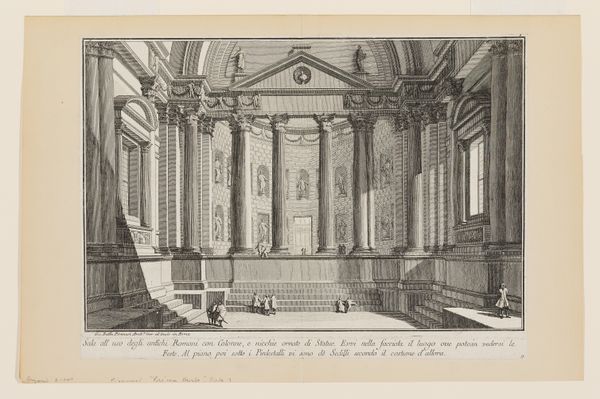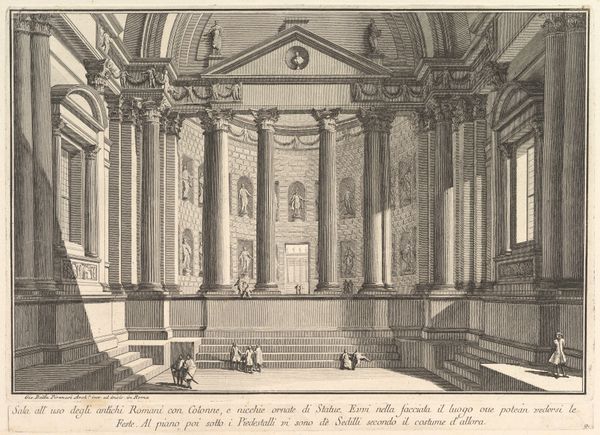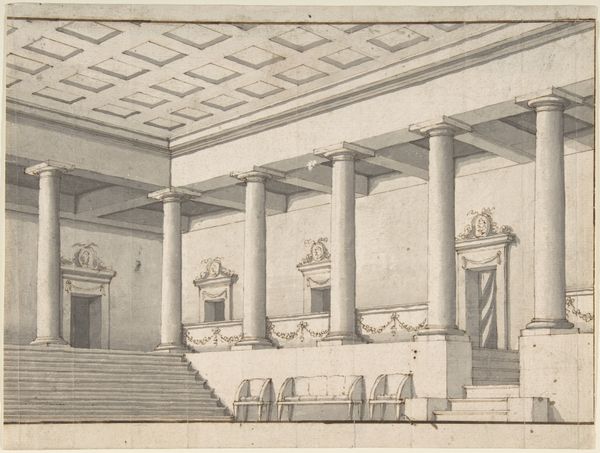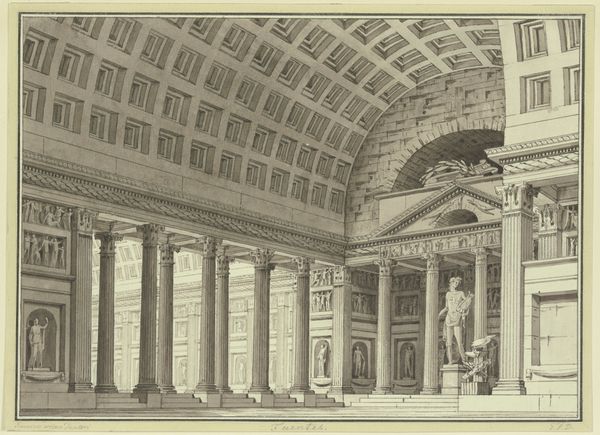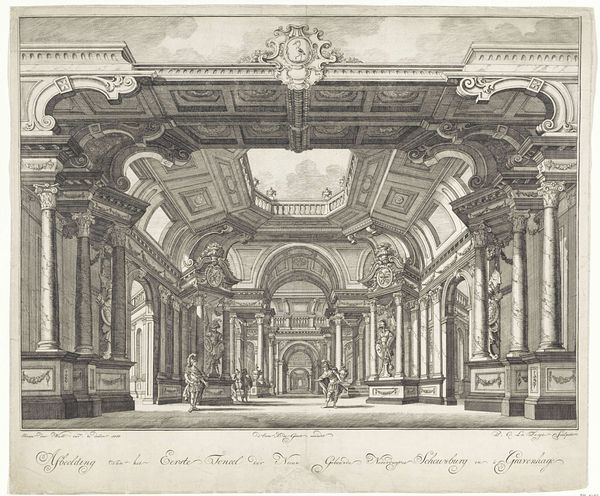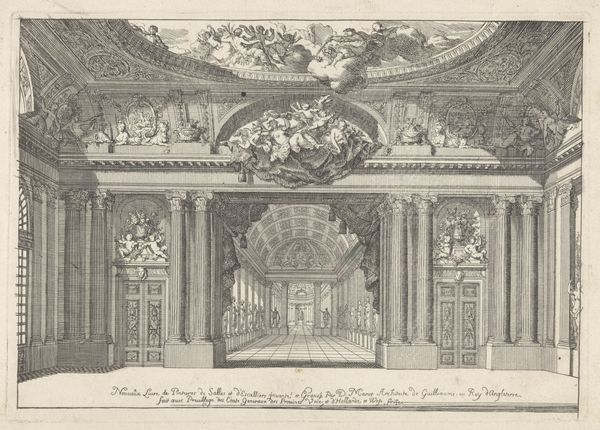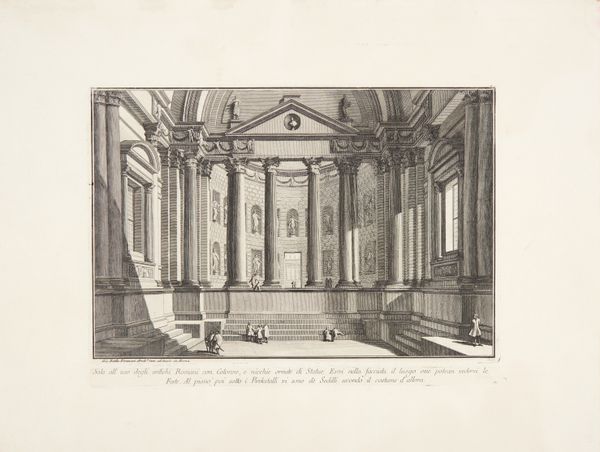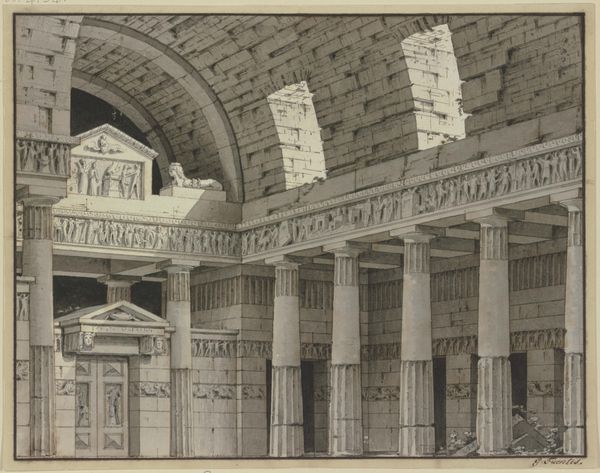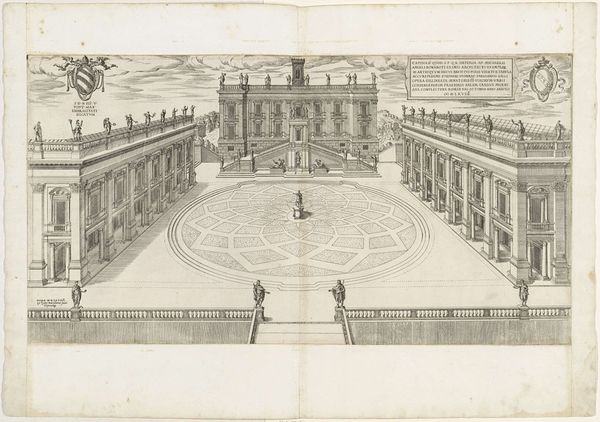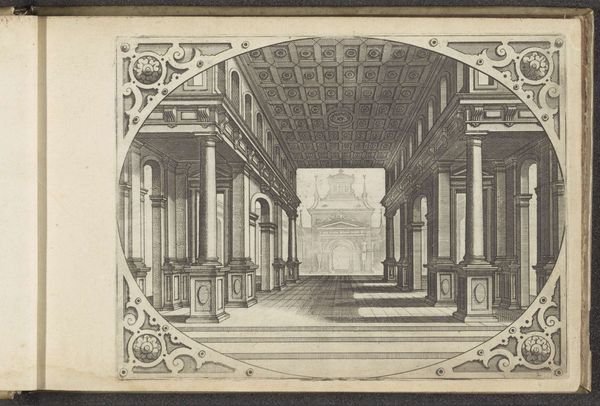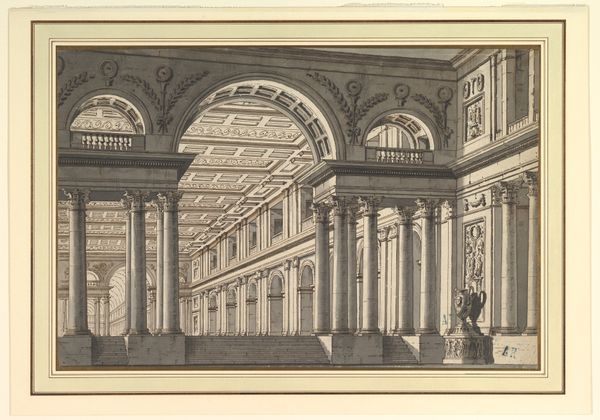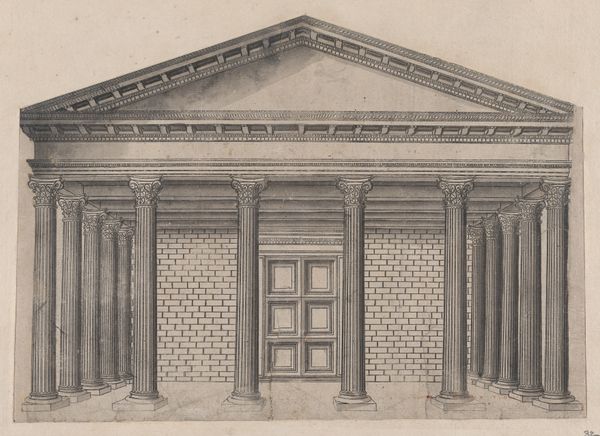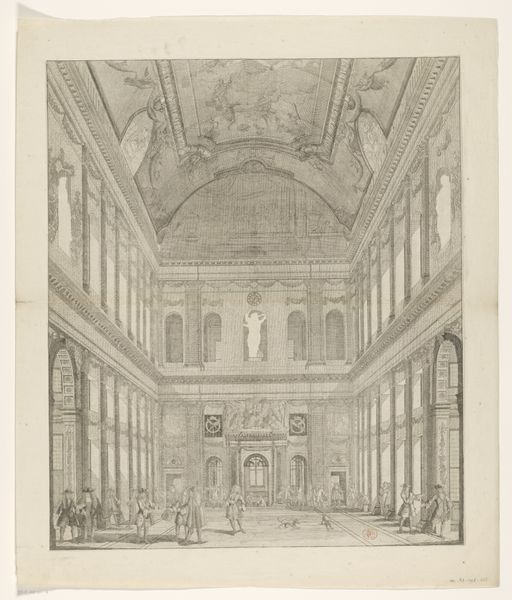
drawing, ink, indian-ink, architecture
#
drawing
#
natural stone pattern
#
architectural landscape
#
sculpture
#
architectural photography
#
historic architecture
#
traditional architecture
#
ink
#
unrealistic statue
#
carved into stone
#
classicism
#
indian-ink
#
15_18th-century
#
architecture
#
historical building
#
statue
Copyright: Public Domain
Editor: Here we have an ink and Indian-ink drawing titled "Korinthischer Festsaal mit großem kassettiertem Rundbogengewölbe" or "Corinthian Ballroom with a Large Coffered Vaulted Arch." It’s author is unknown and, created in the 18th century, showcases a very ordered interior space. I'm really drawn to the architectural details and the sense of perspective. How do you approach analyzing a drawing like this? Curator: It is most productive, I find, to start with a rigorous examination of the visual components. Observe the meticulous rendering of lines, the deliberate modulation of light and shadow, and the proportional relationships governing the composition. The use of linear perspective is critical, creating a pronounced sense of depth that directs the viewer's gaze towards the vanishing point. Are you struck by any particular formal element in this piece? Editor: The repetitive columns certainly catch my eye. They almost seem to create a rhythm. Also, the coffers in the vault… their precise geometry is mesmerizing. Curator: Precisely. Consider, then, how this repetition establishes a clear structural framework, reinforcing the sense of order and rationality that are defining features. The artist's calculated deployment of these forms, executed with considerable technical skill, directs our attention to the underlying architectonic principles at play. Does the materiality—the ink on paper—itself seem to influence your understanding? Editor: I hadn't considered that specifically. I suppose the starkness of the ink contributes to the overall impression of a precisely planned, even idealized space. Curator: Indeed. We discern a strategic decision to employ a medium that lends itself to clarity of line and form. What began as documentation, transcends into a contemplation of ideal structure. Editor: Seeing it purely from the architectural language, without other distraction, it allows us to look at how space and form take center stage. Thank you. Curator: A rewarding insight; one that allows us to appreciate how much clarity lies in an architecture devoid of inhabitants or adornments.
Comments
No comments
Be the first to comment and join the conversation on the ultimate creative platform.

